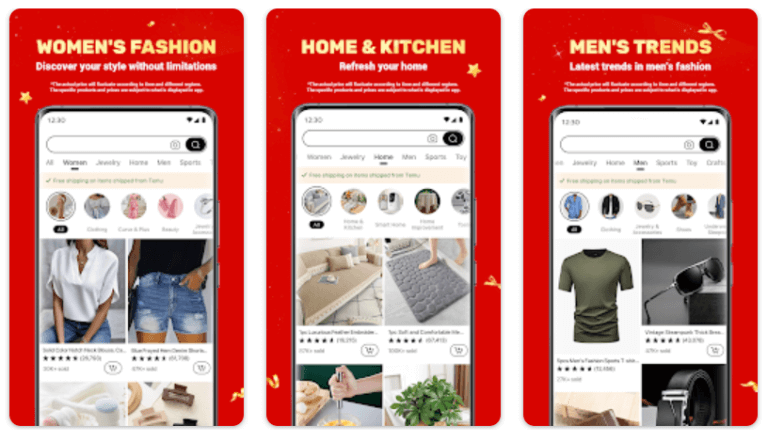Competition and Inflation Concerns May Dampen Success of Amazon’s 2022 Prime Day Event

Amazon Prime Days are upon us once more, returning to the month of July (July 12-13) after two years of timing shifts to accommodate for the pandemic. While Prime Day has historically been both a traffic and revenue driver for Amazon, the rate of growth has begun to decelerate; 2022’s Prime Day could follow a similar slowing trend, particularly given the current macroeconomic situation – a pressured consumer with shifting spending habits, high levels of inflation, and competitors looking to offload excess inventory through their own marque shopping events. Using Similarweb’s Pro and Shopper Intelligence platforms, we take a look at Amazon’s historical performance on Prime Day and what we might expect this year.
Key Takeaways: Post-Pandemic Sales Growth Remains Robust, But is at Risk
Amazon’s monthly revenue growth has been strong and indeed accelerated from July 2021 to June 2022, driven in large part by a significant jump in the average price per unit sold, according to Similarweb’s Shopper Intelligence platform. However, Amazon’s ability to maintain this momentum may be pressured, as rivals across the retail space dramatically cut prices to clear excess inventory and prepare for the back-to-school season. Excess inventory levels are due to a misestimation of consumer buying behavior in 1Q22, as shoppers shifted their potentially declining disposable income to experiences, such as travel, after two years of being at home and spending on categories such as home furnishings.
- Amazon’s monthly YoY sales growth from July 2021 to June 2022 has been driven by a mid-teens rise in average price per unit, as growth in units sold slowed to single-digits, according to Similarweb’s Shopper Intelligence platform.
- However, key rivals, Walmart and Target, have had sharper pricing; Walmart’s average price per unit rose mid-single digits while Target’s fell just under 1% over the same period – such competitive pricing is likely due to the need to clear excess inventory but could weigh on Amazon’s Prime Day success on like-for-like products.
- In June, the price cuts made by Walmart and Target had an impact, with growth in units sold rising just under 4% for both, while growth in units sold fell nearly 2% for Amazon; this was the first decline in growth in units sold for Amazon since October 2021.
- While Walmart has yet to announce a competing promotional event during the Prime Day sale, its Walmart+ Weekend event held in early June 2022 did little to buoy digital traffic and could potentially be indicative of consumer shopping fatigue and more careful spending; despite promotional offers, traffic increases were no different than other weekends during the same month.
- The timing shift of Prime Day will negatively affect Amazon’s sales growth in 2Q22 while lifting 3Q22 performance on a YoY basis.
 |
|
 |
Success of Prime Days Moderating
Amazon’s historical performance on its Prime Days has been strong but that growth is waning. Amazon’s top line growth in Oct. 2020 and June 2021 when it held its Prime Day events was 40% and 27% on a year-over-year basis, respectively, according to estimates from Similarweb’s Shopper Intelligence platform. During 2021’s Prime Day event, Amazon sales reached $6.8 billion, with performance during the event significantly better than in the days leading up to and following Prime Day. However, units sold on Prime Day rose 60% YoY in 2020 but decelerated to 13% YoY in 2021. There could be a further slowdown in units sold growth in 2022, given recent significant price inflation.
Consumer interest in Amazon’s Prime Day and other retailer promotional events can be measured by analyzing web traffic and engagement metrics. On an absolute basis, Amazon is by far the largest online retailer, but improving performance at Target, for example, suggests that the increasingly competitive environment may require an uptick in spend on customer acquisition, a negative for Amazon’s gross margins. Amazon’s traffic spiked 49% on Prime Day’s first day in 2021 compared with a 32% increase in traffic on target.com for Target’s first day of its Deal Days, according to Similarweb estimates. The online retailer remained the behemoth with 132 million visits on day one of Prime Day 2021 compared to less than 9 million visits for Target on day one of its Deal Days.
While dwarfed by Amazon in terms of absolute traffic, omnichannel Target’s surge in web traffic during its 2021 Deal Days indicates rising interest in events held by Amazon’s competitors, as it gives consumers more opportunities to capitalize on deals. The more recent return to in-store shopping could further push consumer spending toward brick-and-mortar behemoths Target and Walmart versus Amazon.
Amazon’s other large competitor, Walmart, held it’s Walmart+ Weekend June 2 to June 5, 2002. This effort to catch consumers’ interests and wallets ahead of Prime Day led to a jump in web traffic by 14.5% on June 5. However, traffic only increased 1.3% on June 4th and actually declined 5.5% on June 3rd. Overall performance during the event, especially over the weekend, was in line with Walmart’s average weekend trends, suggesting that macro pressures like inflation are weighing on overall consumer spending, despite compelling deals. Notably, Sunday June 12th, a week after the Walmart+ Weekend event, had the largest number of traffic visits in the month at 15.3 million.
Outlook for the Upcoming Prime Day Event
Amazon’s past performance on Prime Day, as well as the strength of its revenue growth in 2Q22, according to Similarweb estimates, suggests trends will remain positive at this year’s event. However, the improvement is likely smaller than in prior years, as inflation pressures continue to be a challenge to consumers and competitors take deep discounts and markdowns to move massive inventory surpluses amassed in 1Q22. These headwinds could persist into 2H22.
The Similarweb Insights Newsroom is available to pull additional or updated data on request for the news media (journalists are invited to write to press@similarweb.com). When citing our data, please reference Similarweb as the source and link back to the most relevant blog post or similarweb.com/blog/insights/.
Supporting Data: Google Sheet
More on Prime day:
Disclaimer: All data, reports and other materials provided or made available by Similarweb are based on data obtained from third parties, including estimations and extrapolations based on such data. Similarweb shall not be responsible for the accuracy of the materials and shall have no liability for any decision by any third party based in whole or in part on the materials.
Photo by Christian Wiediger on Unsplash
Wondering what Similarweb can do for your business?
Give it a try or talk to our insights team — don’t worry, it’s free!









